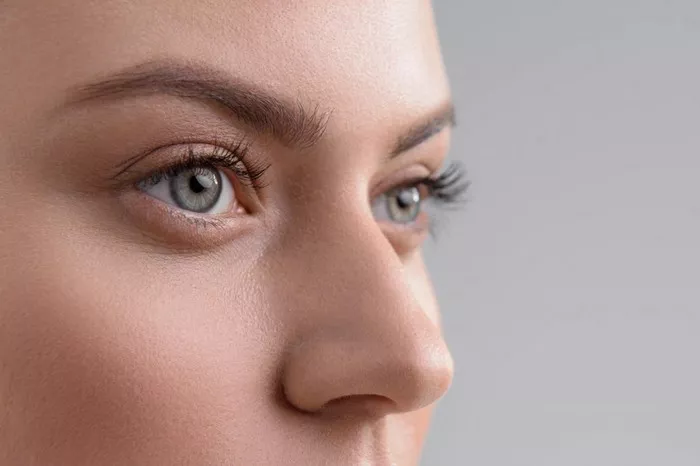A rhinoplasty, commonly known as a “nose job,” is a surgical procedure designed to reshape and enhance the appearance of the nose. It is one of the most sought-after cosmetic surgeries globally, with patients seeking both subtle refinements and more dramatic changes to their nasal aesthetics. One common question among individuals considering rhinoplasty is, “How much can a nose job change your nose?” In this comprehensive article, we will explore the various aspects of rhinoplasty, including its transformative potential, limitations, and what individuals can expect from this popular procedure.
Understanding Rhinoplasty
Rhinoplasty is a surgical procedure that can address a wide range of concerns related to the size, shape, symmetry, and function of the nose. It is performed for both cosmetic and functional reasons, such as correcting breathing difficulties caused by structural issues within the nose. Rhinoplasty can be broadly categorized into two types:
Cosmetic Rhinoplasty: Cosmetic rhinoplasty focuses on improving the appearance of the nose. Patients seek this type of rhinoplasty to enhance their facial harmony, correct aesthetic imperfections, or achieve a more balanced nasal profile.
Functional Rhinoplasty: Functional rhinoplasty is performed primarily to address breathing problems caused by nasal obstruction. This type of rhinoplasty aims to improve the function of the nasal passages while also considering the nose’s appearance.
Factors Affecting the Extent of Change
Several factors influence how much a nose job can change the appearance of the nose. These factors include:
Patient’s Goals: The extent of change largely depends on the patient’s goals and expectations. Some patients seek subtle refinements, while others desire more dramatic transformations. Clear communication with the surgeon is essential to ensure the desired outcome is achieved.
Anatomical Features: The patient’s existing nasal anatomy plays a significant role. Patients with more prominent or distinctive nasal features may have greater potential for change.
Surgeon’s Skill: The surgeon’s expertise and skill are crucial in determining the extent of change achievable through rhinoplasty. An experienced surgeon can work with the patient to achieve their desired goals while maintaining a natural and harmonious appearance.
Type of Rhinoplasty: The type of rhinoplasty (open or closed) and the surgical techniques used can influence the extent of change. Open rhinoplasty provides more visibility and access, making it suitable for complex cases.
Skin Thickness: The thickness of the skin covering the nose can impact the results. Thicker skin may limit the degree of refinement achievable, as it may not conform as readily to the underlying structural changes.
Bone and Cartilage Structure: The patient’s bone and cartilage structure within the nose also affect the extent of change. Structural modifications to these elements can significantly reshape the nose.
Healing and Scarring: The healing process varies from person to person and can influence the final results. Following postoperative care instructions is essential to ensure proper healing and minimize potential complications.
Transformative Potential of Rhinoplasty
Rhinoplasty has the potential to create a wide range of changes to the nose, including:
Size Reduction: Rhinoplasty can reduce the overall size of the nose, making it appear smaller and more proportionate to the rest of the face.
Hump Removal: A dorsal hump, or bump on the bridge of the nose, can be removed to create a smoother profile.
Nasal Tip Refinement: The shape, size, and projection of the nasal tip can be refined to achieve a more defined and aesthetically pleasing appearance.
Nasal Bridge Narrowing: The width of the nasal bridge can be narrowed to create a slimmer appearance.
Nostril Adjustment: Rhinoplasty can alter the size and shape of the nostrils to achieve better symmetry and balance.
Correction of Deviated Septum: Functional rhinoplasty can straighten a deviated septum, improving airflow and addressing breathing difficulties.
Enhancement of Facial Harmony: Rhinoplasty can enhance overall facial harmony by creating a balanced and natural-looking nasal profile.
Limitations of Rhinoplasty
While rhinoplasty is a highly versatile and effective procedure, it does have limitations. It’s important for individuals considering rhinoplasty to be aware of these limitations:
Realistic Expectations: Patients must have realistic expectations about what rhinoplasty can achieve. The goal is to enhance the natural features of the nose, not to create an entirely different nose.
Skin Thickness: Thicker skin may limit the degree of refinement that can be achieved, as it may not conform as readily to structural changes.
Healing and Scarring: The healing process can vary, and some degree of scarring is inevitable. While scars are typically inconspicuous, they are permanent.
Functional Limitations: While functional rhinoplasty can address breathing issues, it may not completely eliminate all breathing difficulties, especially if there are underlying medical conditions.
Conclusion
Rhinoplasty is a transformative surgical procedure that can change the appearance of the nose to varying degrees, depending on multiple factors. The extent of change achievable through rhinoplasty is influenced by the patient’s goals, anatomical features, surgeon’s skill, and other factors. While rhinoplasty offers significant potential for enhancement, patients must have realistic expectations and be aware of the procedure’s limitations. Clear communication with a qualified and experienced surgeon is essential to ensure that the desired results are achieved while maintaining a natural and harmonious nasal appearance.


